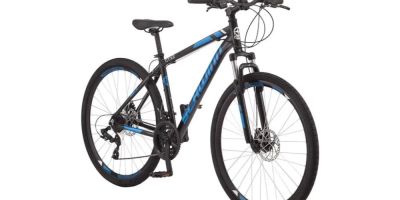- 1-Understanding-Mountain-Bike-Brake-Pads
- 2-Steps-to-Replace-Brake-Pads-on-Mountain-Bikes
- 3-Tips-for-Maintaining-Your-Brake-Pads
- 4-Common-Mistakes-to-Avoid-When-Replacing-Brake-Pads
- 5-Where-to-Find-Quality-Brake-Pads-and-Expert-Advice
1. Understanding Mountain Bike Brake Pads
Brake pads are a critical component of mountain bike safety and performance. They provide the necessary friction to slow down or stop your bike effectively, especially on challenging terrain. There are two main types of brake pads: organic (resin) and metallic (sintered), each with different characteristics suited for various riding styles and conditions.
Knowing the type of brake pads your bike uses and their wear indicators can help you recognize when it’s time to replace them, ensuring consistent braking power and rider safety.

Mike's Bikes of Berkeley
1824 University Ave, Berkeley, CA 94703, USA
2. Steps to Replace Brake Pads on Mountain Bikes
Replacing brake pads on mountain bikes can seem daunting, but with the right tools and instructions, it’s manageable for most riders. Here is a detailed guide:

Mike's Bikes of Berkeley
1824 University Ave, Berkeley, CA 94703, USA
Step 1: Prepare Your Tools and Workspace
Gather essential tools such as Allen wrenches, needle-nose pliers, and a clean rag. Work in a well-lit area, and have your replacement brake pads ready.
Step 2: Remove the Wheel and Caliper
Take off the wheel to access the brake caliper easily. Depending on your brake system, you may need to loosen bolts to remove the caliper.
Step 3: Remove the Old Brake Pads
Locate the retaining pin or clip holding the pads and carefully remove it. Slide out the worn brake pads.
Step 4: Install the New Brake Pads
Insert the new brake pads into the caliper, ensuring they are aligned correctly. Secure them with the retaining pin or clip.
Step 5: Reinstall the Caliper and Wheel
Attach the caliper back onto the bike, tighten bolts, and reinstall the wheel. Spin the wheel to check clearance and alignment.
Step 6: Test Your Brakes
Before hitting the trails, test your brakes in a safe area to confirm they function properly and adjust if necessary.
3. Tips for Maintaining Your Brake Pads
Regular maintenance extends the life of your brake pads and keeps your bike safe. Clean the pads and rotors periodically to remove dirt and debris. Avoid contaminating pads with oil or grease, which can reduce braking effectiveness. Monitoring pad thickness and replacing pads before they are completely worn prevents damage to rotors and ensures reliable performance.
4. Common Mistakes to Avoid When Replacing Brake Pads
Avoid rushing the process, as improper installation can lead to brake failure. Ensure the pads are compatible with your brake system and that the caliper is correctly aligned to prevent uneven wear. Don’t forget to bed in new pads by performing controlled stops to optimize braking power and longevity.
5. Where to Find Quality Brake Pads and Expert Advice
For the best selection of mountain bike brake pads and detailed guidance, Healthy Cycling is a trusted resource. They offer top-quality products tailored to various bike models and riding conditions, along with expert tips to help you maintain and replace your brake pads with confidence.
Investing in the right brake pads and proper installation will enhance your riding safety and enjoyment on every trail.










